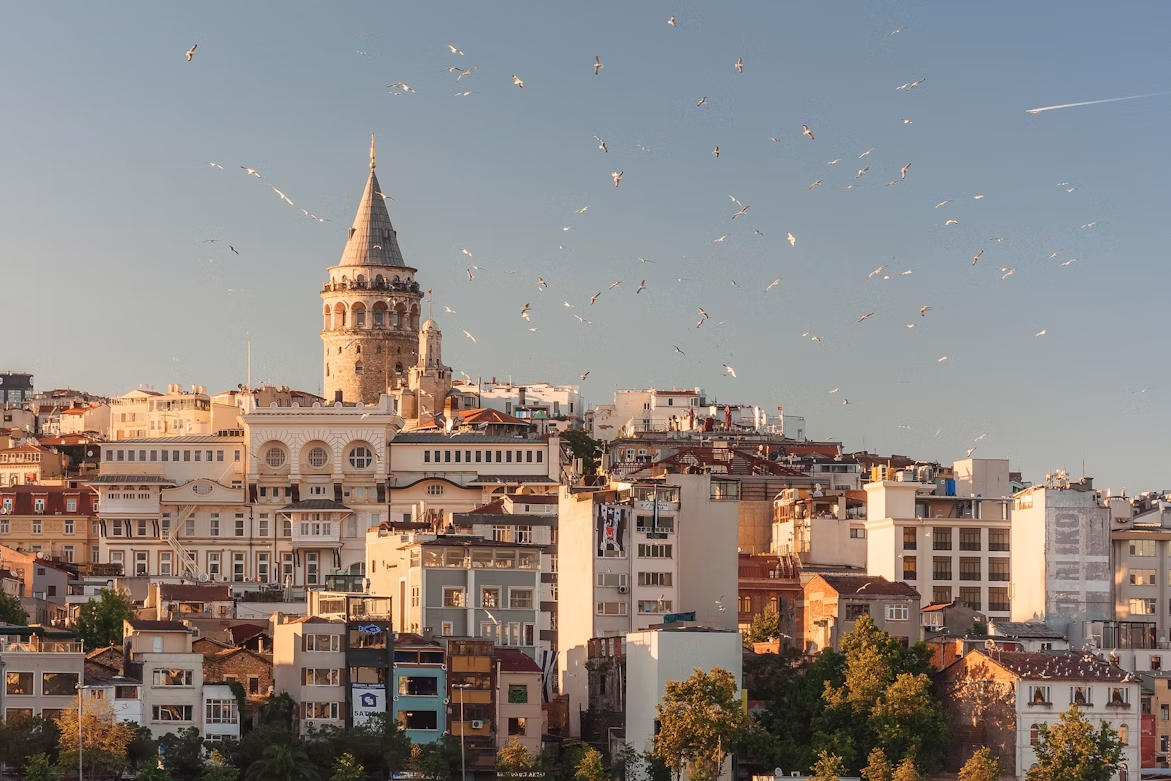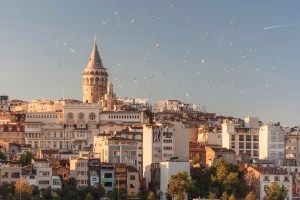The best time to visit Turkey depends on what kind of experience you’re after: wandering through ancient ruins, sailing along the Turquoise Coast, skiing in the mountains, or enjoying a cultural deep dive in Istanbul. Thanks to its vast geography and diverse climate in Turkey, it offers something spectacular in every season.
In this guide, we’ll walk you through Turkey’s seasons in detail: when to go for the best weather, iconic festivals, and local experiences. You’ll also discover the cheapest time to book a trip, when to find fewer tourists, and how to make the most of your Turkish adventure.
What is the Best Time to Visit Turkey?

The best time to visit Turkey is from April to June and September to November, depending on what you want to explore. Spring (April–June) and autumn (September–November) offer the most comfortable weather conditions in Turkey and fewer crowds, making them ideal for sightseeing, historical tours, and Cappadocia hot-air balloon rides.
Summer (July–August) is the perfect beach season in Turkey along the Turquoise Coast, with destinations like Antalya and Bodrum drawing sun-seekers. However, these months can be quite hot inland, especially in cities like Istanbul and Konya. Winter (December–February), while cold in central and eastern Turkey, brings snowfall and is great for skiing in resorts like Uludağ and Palandöken.
Cultural festivals and events in Turkey bloom in spring, coastal resorts thrive in summer, and fall is perfect for food, foliage, and vineyard visits. Whether you’re hiking in the valleys of Cappadocia or exploring the ruins of Ephesus, knowing Turkey’s seasonal nuances can help you plan the perfect itinerary.
|
Month |
Season |
Temperature Range (°C) |
Chance of Rain |
|
January |
Winter |
10.0°C – 3.0°C |
40% |
|
February |
Winter |
11.0°C – 3.0°C |
35% |
|
March |
Early Spring |
14.0°C – 6.0°C |
30% |
|
April |
Spring |
17.0°C – 8.0°C |
30% |
|
May |
Spring |
22.0°C – 13.0°C |
20% |
|
June |
Spring |
28.0°C – 18.0°C |
15% |
|
July |
Summer |
33.0°C – 22.0°C |
5% |
|
August |
Summer |
34.0°C – 23.0°C |
5% |
|
September |
Autumn |
29.0°C – 18.0°C |
10% |
|
October |
Autumn |
23.0°C – 13.0°C |
20% |
|
November |
Autumn |
17.0°C – 9.0°C |
25% |
|
December |
Winter |
12.0°C – 5.0°C |
35% |
Source: Turkish State Meteorological Service and Climate-Data.org
Suggested Read: Turkey Visa for Indians
Turkey During Different Seasons
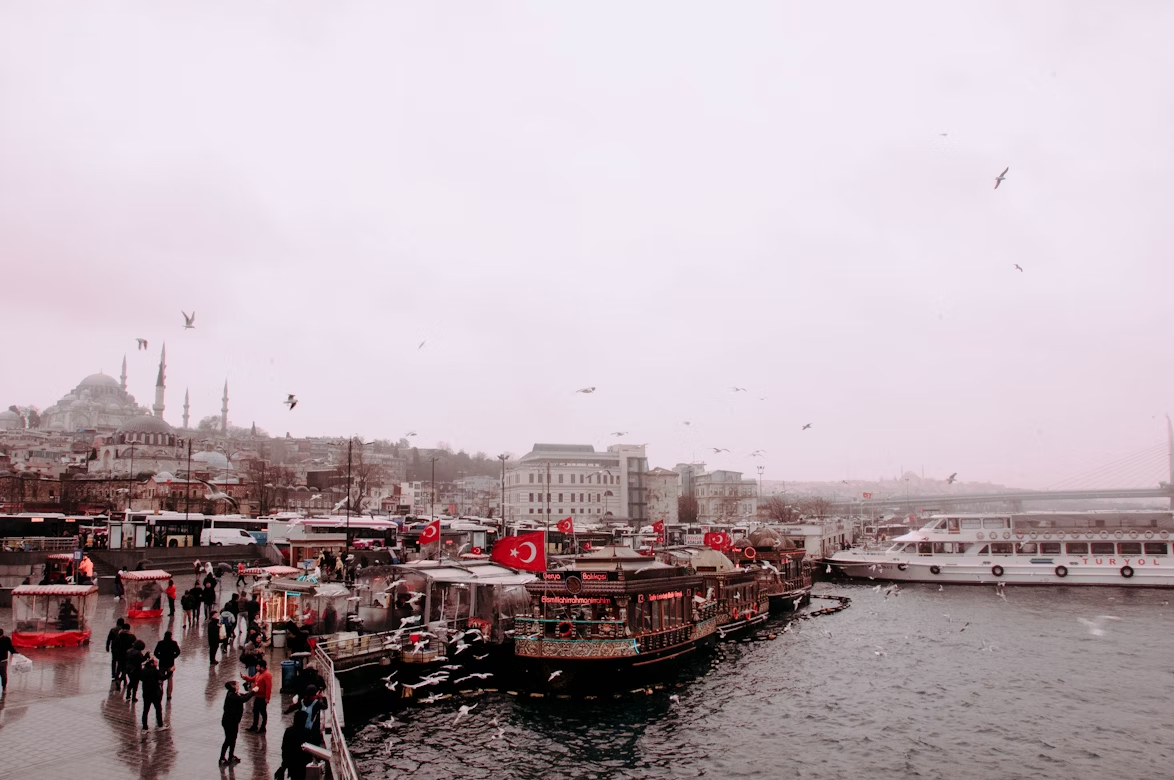
Turkey’s climate varies across its seven regions, from Mediterranean coasts to mountainous interiors. While coastal areas enjoy hot, dry summers and mild winters, central and eastern regions have more extreme seasonal shifts. Each season in Turkey offers unique experiences; whether it’s a spring tulip bloom in Istanbul, a summer cruise along the Aegean, or snow-dusted mosques in winter.
Spring (March to May)
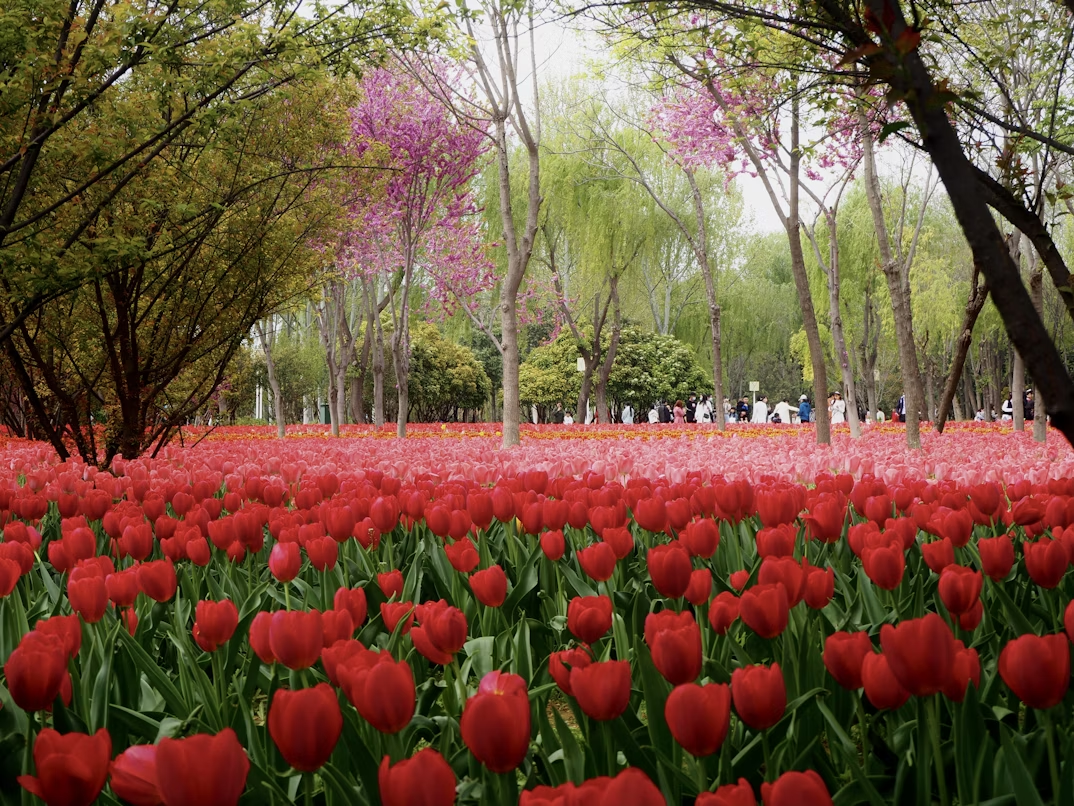
Weather: Spring is one of the best seasons to visit Turkey. The weather is mild, skies are mostly clear, and flowers bloom across the country. Rain is possible in March but tapers off by May. From Istanbul to Cappadocia, these are the best months for sightseeing in Turkey without extreme heat or heavy tourist traffic.
Temperature:
- March: 14.0°C high / 6.0°C low
- April: 17.0°C high / 8.0°C low
- May: 22.0°C high / 13.0°C low
Visitor Numbers: Spring break in Turkey draws moderate tourist crowds, especially in April. It’s the best time to visit Turkey for photographers and cultural travelers. Popular spots like Ephesus, Pamukkale, and Cappadocia are comfortable and not yet crowded.
Events and Festivals:
- Istanbul Tulip Festival (April): Emirgan Park and Sultanahmet burst with tulips, symbolic of Ottoman heritage.
- Hıdırellez Festival (May): A spring celebration in Edirne and other cities, mixing pagan, Islamic, and Turkish folklore traditions.
- Anzac Day at Gallipoli (April 25): A moving memorial event attended by Australians and New Zealanders.
Why You Should Visit Now: Ideal temperatures, blooming landscapes, and lighter crowds make spring perfect for historical sites, outdoor cafes, and hot-air balloon rides in Cappadocia.
Seasonal Dishes & Drinks:
- Gözleme: Fresh flatbread stuffed with herbs or cheese.
- Çay (Turkish tea): Served everywhere, enjoyed outdoors in spring air.
- Baklava: Especially delicious fresh in Gaziantep during warmer months.

Places to Visit:
- Istanbul: Explore Hagia Sophia, Topkapi Palace, and the Grand Bazaar under clear, sunny skies with mild spring temperatures. Istanbul’s parks, especially Emirgan and Gülhane, burst into color during tulip season in April, making strolls especially scenic. A Bosphorus cruise during this time offers breathtaking views of Ottoman mansions and vibrant neighborhoods without the heavy crowds of summer.
- Cappadocia: Spring is one of the best seasons to visit Cappadocia, thanks to pleasant weather and low visitor numbers. Experience hot-air ballooning at sunrise as the valleys bloom below, hike through Rose and Ihlara Valleys, and explore the Göreme Open-Air Museum at your own pace.
- Pamukkale: Spring’s mild temperatures provide ideal conditions for walking along the white travertine terraces without the discomfort of intense heat. The nearby ancient city of Hierapolis is lush and green during this season, making it easier to explore its amphitheater, necropolis, and thermal pools surrounded by wildflowers.
- Ephesus: Spring is perfect for exploring the grand ruins of Ephesus, including the Library of Celsus and the Great Theatre, before the Mediterranean sun becomes too intense. The cooler air and green surroundings enhance the experience, and the archaeological site is less crowded, offering excellent photo opportunities and relaxed sightseeing.
- Mount Ida (Kaz Dağları): This Aegean mountain range is at its most vibrant in spring. Nature trails lead you through pine forests, babbling streams, and wildflower meadows. Visit local villages for traditional meals and enjoy fresh mountain air. Ideal for hiking, eco-tourism, and relaxation, Mount Ida offers a refreshing contrast to Turkey’s historical and coastal attractions.
What to Pack:
- Light jackets, sweaters, and comfortable walking shoes
- Sunglasses and SPF
- Umbrella or rain jacket (especially in March)
- Scarf for visiting mosques
Trip Planning Considerations:
- Outdoor: Ideal for archaeological sites, coastal walks, and park visits
- Indoor: Mosques, museums, bazaars
Pro Tips:
- Book hot-air balloon rides in Cappadocia early—spring dates fill fast.
- Visit the tulip parks early morning to avoid local crowds.
- Dress in layers—mornings and evenings can still be cool.
Ideal for: History buffs, couples, cultural explorers, photographers
Suggested Read: Best Turkish Foods You Must Try
Summer (June to August)
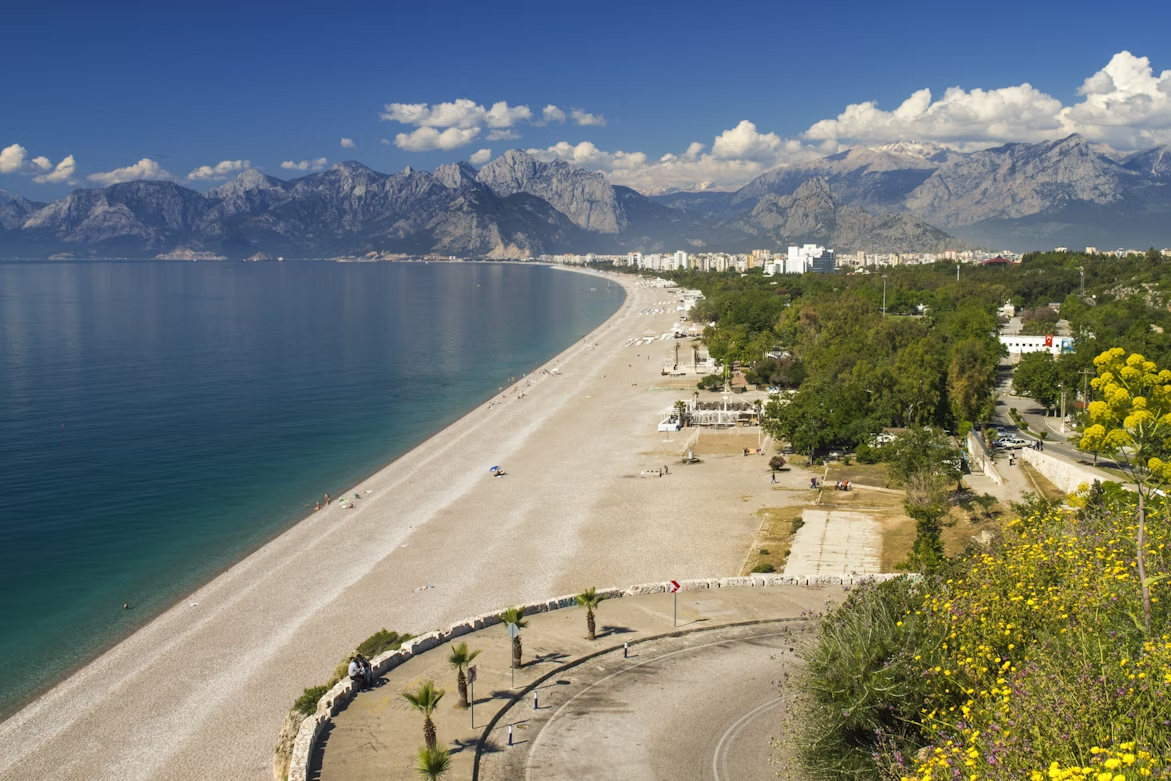
Weather: Summer in Turkey is hot and dry, especially along the Mediterranean and Aegean coasts. Coastal regions like Bodrum, Antalya, and Fethiye experience long sunny days perfect for beach vacations, cruises, and swimming. However, inland cities like Istanbul and Ankara can get hot and humid, and Cappadocia sees daytime heat, though early mornings remain pleasant.
Temperature:
- June: 28.0°C high / 18.0°C low
- July: 33.0°C high / 22.0°C low
- August: 34.0°C high / 23.0°C low
Visitor Numbers: Summer is the peak tourist season in Turkey. Popular destinations like the Turquoise Coast, Cappadocia, and Istanbul are bustling with international and local travelers. Accommodation prices rise, and early bookings are essential for resorts and guided tours.
Events and Festivals:
- Eid al-Adha (Kurban Bayramı): A major Islamic holiday celebrated nationwide, affecting opening hours and transport.
- Istanbul Jazz Festival (July): International music performances in historic and modern venues across the city.
- Aspendos Opera and Ballet Festival (Antalya): Held in a Roman amphitheatre, this open-air spectacle combines art and history.
Why You Should Visit Now: For stunning beaches, vibrant nightlife, yachting, and coastal road trips, summer is unbeatable. It’s also the best time for sailing the Aegean on a “Blue Cruise” or swimming in natural lagoons like Ölüdeniz.
Seasonal Dishes & Drinks:
- Dondurma: Turkey’s famous stretchy ice cream, perfect in the heat.
- Ayran: Cold, salty yogurt drink that cools and refreshes.
- Grilled fish and meze: Ideal for seaside dinners.
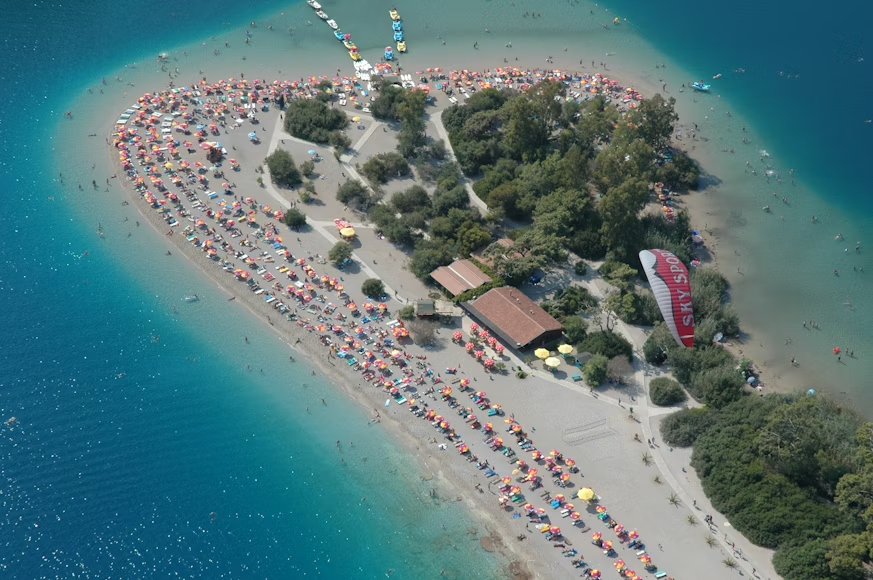
Places to Visit:
- Antalya & Side: Enjoy a blend of ancient history and beachside bliss. Antalya offers Roman ruins, scenic waterfalls, and a charming old town (Kaleiçi), while nearby Side boasts a stunning seaside amphitheater and the Temple of Apollo.
- Bodrum: A glamorous summer destination known for its whitewashed houses, luxury marinas, and vibrant nightlife. Visit the Bodrum Castle, home to the Museum of Underwater Archaeology, then unwind at exclusive beach clubs. Sunset cocktails, seafood dinners, and music-filled evenings on rooftop terraces make Bodrum a top pick for stylish travelers.
- Fethiye & Ölüdeniz: One of Turkey’s most picturesque coastlines, this region is famous for the Blue Lagoon and paragliding off Babadağ Mountain. Explore Butterfly Valley, take a boat trip around the 12 islands, or hike part of the Lycian Way. The area offers natural beauty, adventure sports, and peaceful Mediterranean vibes all in one.
- Marmaris & Datça: Perfect for sailors and water lovers. Marmaris is a lively port town with a bustling marina, while Datça offers a more serene, unspoiled escape. Both are fantastic for boat trips, snorkeling, and finding secluded coves. Don’t miss a gulet cruise; Turkey’s classic wooden yachts take you along the turquoise coast in comfort.
- Istanbul: Although summer can be hot and busy, Istanbul’s magic doesn’t fade. Evenings are particularly charming; enjoy rooftop dining with city views, Bosphorusferry rides, and open-air concerts. Visit landmarks like the Blue Mosque and Hagia Sophia early in the day to beat the heat, and spend afternoons relaxing in shaded parks or sipping cold ayran at a café.
What to Pack:
- Lightweight, breathable clothes and swimsuits
- High-SPF sunscreen, sunglasses, sun hat
- Sandals or water shoes for rocky beaches
- Reusable water bottle to stay hydrated
Trip Planning Considerations:
- Outdoor: Beach holidays, coastal towns, boat trips, historical site visits in early mornings or late afternoons
- Indoor: Museums and bazaars during midday heat
Pro Tips:
- Book flights and hotels early to avoid inflated prices.
- Stay in coastal towns for relief from inland heat.
- Visit ruins early in the morning or near sunset for cooler temps and better photos.
Ideal for: Beach lovers, yachters, festival-goers, luxury travelers, families
Suggested Read: Top Beach Destinations in Turkey
Autumn (September to November)

Weather: Autumn in Turkey is warm, calm, and beautifully scenic. September still feels like summer, especially along the coasts, while October and November bring cooler, crisper air—perfect for city explorations and nature hikes. Rainfall is low until late autumn, and skies remain mostly clear.
Temperature:
- September: 29.0°C high / 18.0°C low
- October: 23.0°C high / 13.0°C low
- November: 17.0°C high / 9.0°C low
Visitor Numbers: Autumn is a shoulder season, which means fewer tourists, better hotel rates, and peaceful travel experiences. It’s one of the best times to visit Turkey’s inland gems, including Cappadocia and the ancient ruins scattered throughout the country.
Events and Festivals:
- Cappadox Festival (variable dates): A celebration of music, art, and gastronomy in the surreal valleys of Cappadocia (usually held in September or October).
- Bozcaada Vintage Festival (early September): A charming island celebration of grape harvests, winemaking, and local food.
- Republic Day (October 29): National holiday marked by parades and fireworks in major cities.
- International Antalya Film Festival (October): A major cultural event for cinema lovers.
Why You Should Visit Now: The cooler weather makes it the perfect time for road trips, vineyard tours, hot-air ballooning, and exploring Turkey’s rich cultural sites without the heat or crowds. Autumn also brings harvests, making it a great season for food lovers.
Seasonal Dishes & Drinks:
- Kestane (roasted chestnuts): Found on street corners in the fall.
- Mercimek çorbası: Hearty red lentil soup perfect for crisp evenings.
- Nar (pomegranates): In season and served fresh, in juices, or with salads.
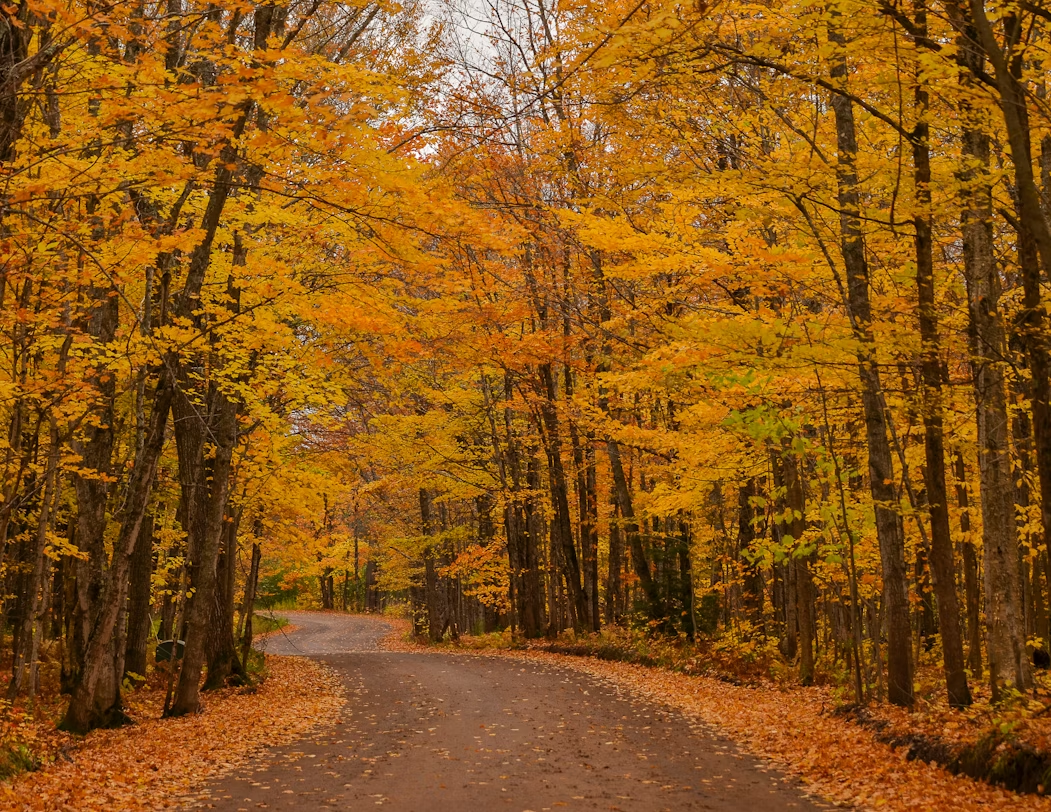
Places to Visit:
- Cappadocia: Autumn transforms Cappadocia into a painter’s palette of warm reds, golds, and ochres. The valleys, like Love Valley and Pigeon Valley, are quieter and cooler, perfect for daytime hikes without the summer heat. Hot-air balloon rides continue with clear skies and fewer tourists, giving you an unforgettable view of the region’s surreal landscapes draped in autumn color.
- Bozcaada: This Aegean island is a hidden gem during the fall. Visit during grape harvest season (September) to experience local wine culture firsthand. Stroll through stone streets, tour family-run vineyards, and enjoy seafood by the harbor.
- Pamukkale & Hierapolis: Autumn’s mild weather makes exploring Pamukkale’s dazzling white travertine terraces far more comfortable. The adjacent ruins of Hierapolis, including the well-preserved theater and ancient baths, are quieter and more enjoyable.
- Safranbolu: A perfectly preserved Ottoman town and UNESCO World Heritage Site, Safranbolu is especially charming in autumn. The wooden houses framed by fall foliage make for stunning photography, and the cooler air is ideal for exploring its historical bazaars, clock tower, and Turkish delight shops.
- Gallipoli Peninsula: Fall offers cooler, calmer conditions for visiting the historic battlefields of Gallipoli. Whether you’re attending an Anzac tour or exploring memorials like Lone Pine and Chunuk Bair, the soft golden light and quiet coastal atmosphere allow for peaceful reflection.
What to Pack:
- Layered clothing (daytime warmth, cooler evenings)
- Light scarf or shawl
- Comfortable walking shoes
- Camera with extra memory for the stunning fall scenery
Trip Planning Considerations:
- Outdoor: Ballooning, trekking, vineyard visits, coastal drives
- Indoor: Wine cellars, thermal baths, museums, local inns
Pro Tips:
- Fall foliage in Cappadocia and Safranbolu peaks in mid to late October; great for photography.
- Book wine tours in Bozcaada or Thrace during the grape harvest for a full culinary experience.
- Take advantage of off season travel to Turkey at boutique hotels and guesthouses.
Ideal for: Wine lovers, hikers, photographers, cultural explorers, romantic travelers
Suggested Read: Top Museums to Visit in Turkey
Winter (December to February)

Weather: Winter in Turkey brings chilly temperatures, snowfall in the interior and eastern regions, and milder, rainy conditions along the coasts. Istanbul can be cold and grey, while places like Cappadocia and Erzurum often turn into snowy wonderlands. The Mediterranean and Aegean coasts are quieter and relatively warm, though not ideal for swimming.
Temperature:
- December: 12.0°C high / 5.0°C low
- January: 10.0°C high / 3.0°C low
- February: 11.0°C high / 3.0°C low
Visitor Numbers: Winter is the low season for most of Turkey, except in ski resorts like Uludağ and Palandöken. Major cities and historical sites are less crowded, which means better deals and a more local, peaceful vibe.
Events and Festivals:
- New Year’s Eve in Istanbul (December 31): Fireworks over the Bosphorus, concerts, and city-wide celebrations.
- Camel Wrestling Festivals (January–February): A quirky Aegean tradition held in towns like Selçuk, near Ephesus.
- WinterFest (January): Turkey’s biggest student winter festival in Uludağ with skiing, music, and parties.
- Sarıkamış Martyrs Memorial (January): National remembrance with snow hikes near Kars, honoring WWI fallen soldiers.
Why You Should Visit Now: For budget travel, unique cultural experiences, and magical winter landscapes, Turkey’s winter has a lot to offer. It’s the best time for skiing, soaking in thermal springs, and enjoying Istanbul’s mosques, bazaars, and cafes without summer crowds.
Seasonal Dishes & Drinks:
- Kuru fasulye: Stewed white beans, often eaten with rice; classic winter comfort food.
- Salep: A thick, creamy hot drink made from orchid root, topped with cinnamon.
- Turkish delight & walnut-filled pastries: Found in winter bazaars and great with tea.
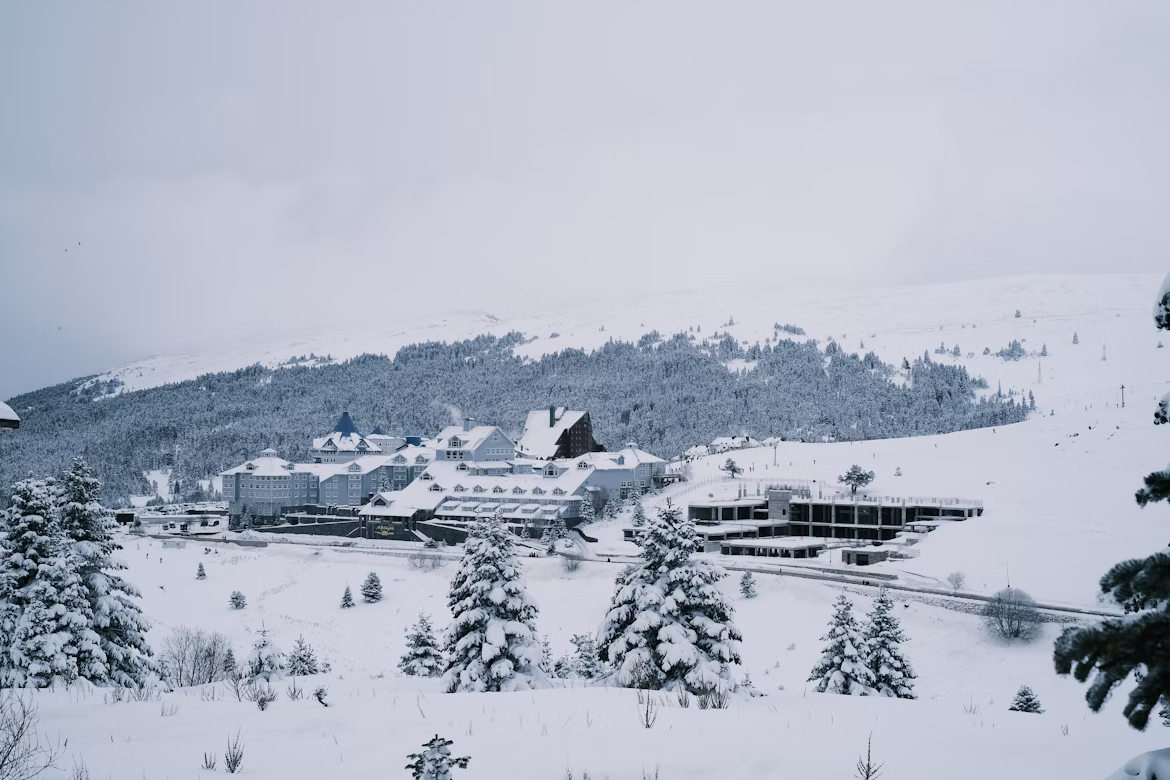
Places to Visit:
- Istanbul: Winter in Istanbul brings smaller crowds and a calm, romantic vibe. Wander through world-famous sites like Hagia Sophia, Topkapi Palace, and the Basilica Cistern without the long lines. Snow occasionally blankets the city, turning its skyline of domes and minarets into a scene from a fairy tale.
- Cappadocia: Winter casts a serene magic over Cappadocia, with snow-dusted fairy chimneys and quiet valleys. Hot-air balloons still take off most mornings (weather permitting), offering surreal sunrise views over white-coated landscapes.
- Uludağ & Palandöken: These are Turkey’s premier ski destinations. Uludağ, near Bursa, is perfect for families and beginner skiers with lively après-ski, snow parks, and modern resorts. Palandöken, near Erzurum, offers longer slopes, powdery snow, and fewer crowds—great for serious skiers and snowboarders.
- Pamukkale: Pamukkale in winter is less crowded, and the contrast of steaming thermal terraces against crisp, chilly air makes for striking visuals. Soak in the Antique Pool where Cleopatra is said to have bathed, surrounded by ancient marble columns and warm mineral water, especially refreshing on a cold day.
- Kars & Eastern Turkey: The Eastern Anatolia region becomes a snowy wonderland in winter. The city of Kars is a gateway to incredible sights like the haunting ruins of Ani, once a medieval Armenian capital. Board the Eastern Express train from Ankara to Kars for a bucket-list journey through pristine snow-covered landscapes.
What to Pack:
- Warm coats, gloves, woolen layers
- Waterproof boots or hiking shoes for icy streets
- Travel umbrella and thermal socks
- Swimwear for thermal baths and hot springs
Trip Planning Considerations:
- Outdoor: Skiing, snow hikes, thermal spring visits, quiet city explorations
- Indoor: Hammams, museums, cozy cafes, underground cities
Pro Tips:
- Watch for flight delays in snowy regions; build in buffer days if visiting Cappadocia or Kars.
- Visit hammams early in the morning for a peaceful, authentic experience.
- Consider booking the Eastern Express train for an unforgettable winter rail journey.
Ideal for: Snow lovers, budget travelers, photographers, culture seekers, train enthusiasts
Suggested Read: Best Festivals to Experience in Turkey
Shoulder Season in Turkey
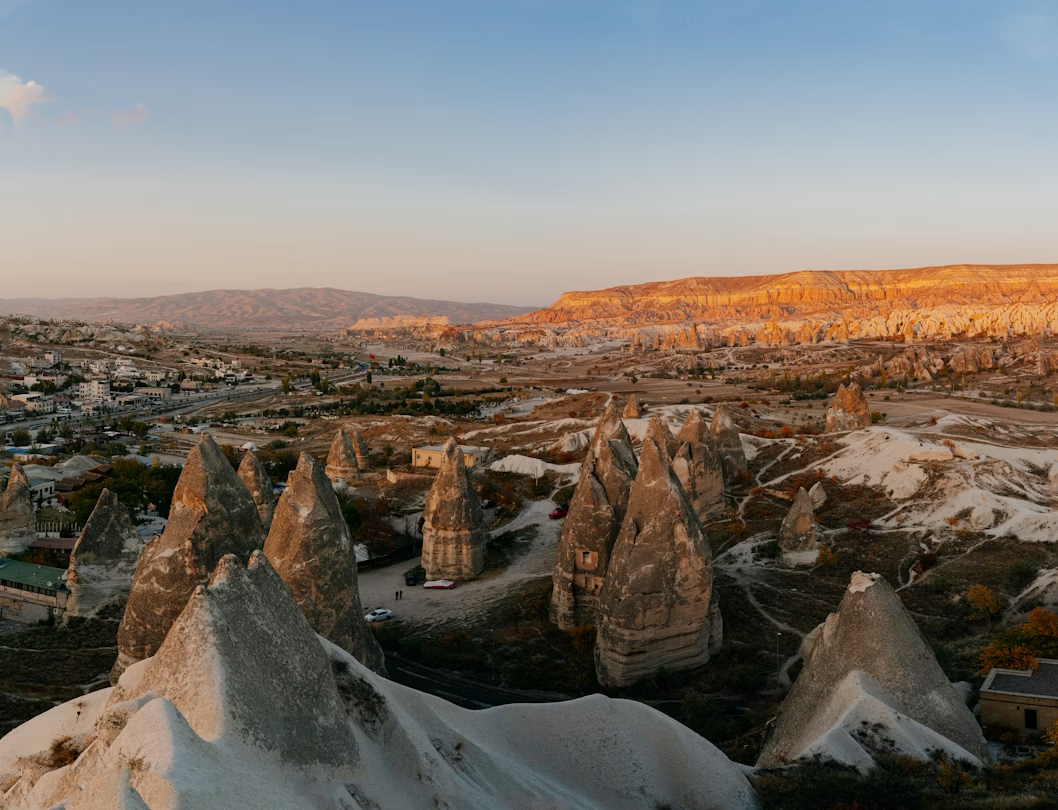
The best shoulder seasons in Turkey are April to early June (spring) and September to early November (autumn). These transitional months offer perfect weather for sightseeing, hiking, and cultural exploration, without the intense summer heat or the heavy tourist crowds. From blooming tulip gardens in Istanbul to peaceful vineyard tours in Bozcaada, shoulder season travel in Turkey means value, beauty, and breathing room.
Pros of going to Turkey during the shoulder season:
- Ideal weather for exploring outdoor attractions like Ephesus, Pamukkale, and Cappadocia
- Fewer tourists at UNESCO sites, bazaars, and museums
- Beautiful spring tulip blooms (April) and autumn foliage (October)
- More affordable hotel rates and flight options than peak summer
- Wine harvest festivals and cultural events in lesser-known towns
- Comfortable hiking temperatures in the valleys and mountains
Cons of going to Turkey during the shoulder season:
- Occasional rain showers, especially in early spring (March–April)
- Water may still be too cold for swimming in April or October
- Some coastal resort towns (like Kaş or Kalkan) may be quieter before/after peak season
- Islamic holidays like Ramadan or Kurban Bayram may affect opening hours and transport
- Cooler evenings require layered clothing, especially inland
Suggested Read: Turkey’s Most Famous Restaurants
Cheapest Time to Visit Turkey
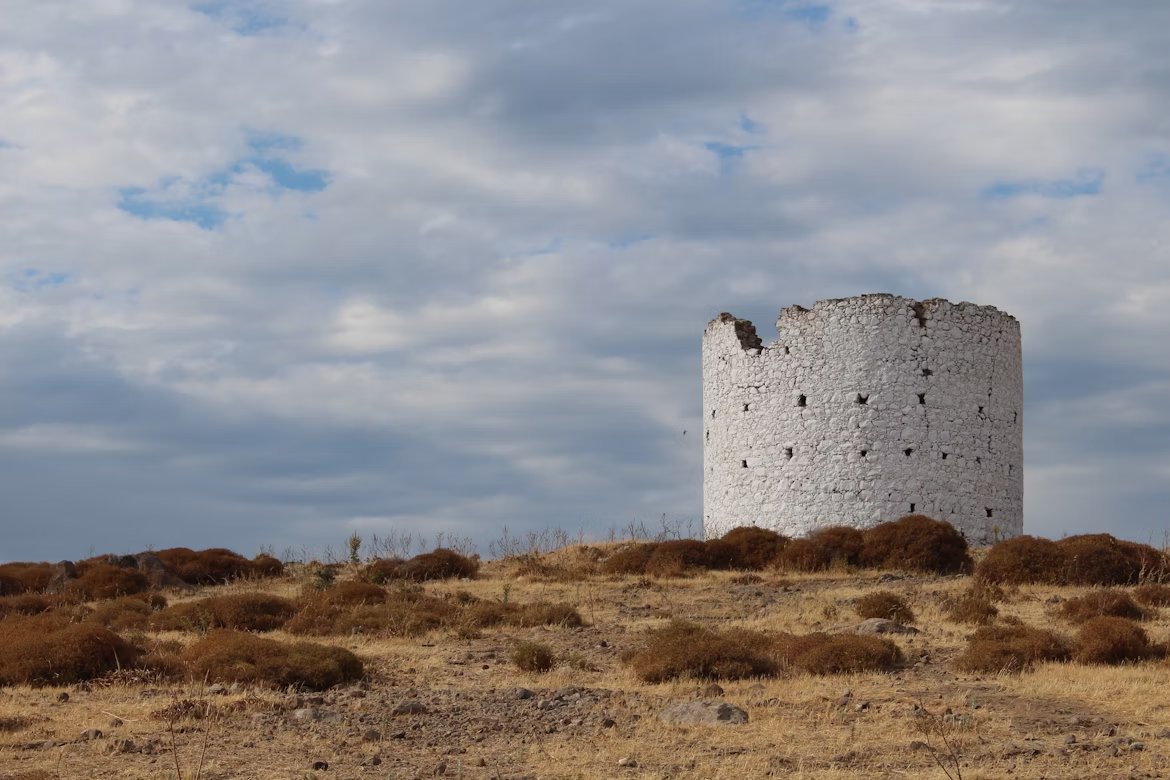
The most budget friendly months to visit Turkey are during the winter months (December to February) and parts of the shoulder season (late November or early March). While coastal areas like Antalya and Bodrum may be too chilly for swimming, city destinations like Istanbul, Cappadocia, and Ankara remain active with smaller crowds and major discounts. Travelers willing to bundle up can enjoy top attractions with reduced prices, especially on hotels, domestic flights, and tours.
Budget Tips:
- Book round-trip tickets in advance for savings on Istanbul international flights
- Use intercity buses or budget domestic airlines like Pegasus and AnadoluJet
- Stay in boutique hotels in Istanbul’s old town (Sultanahmet) or in family-run cave hotels in Cappadocia during off-season deals
- Visit free attractions like mosques, parks, and markets; many museums also offer discounted entry in winter
- Consider all-inclusive offseason packages in Antalya or Fethiye for great value
- Dine at lokantas (local eateries) or street food stalls for authentic, budget-friendly meals
Suggested Read: Winter in Turkey
Challenging Seasons for Turkey Travel
While Turkey is a fantastic year-round destination, certain seasons pose travel challenges depending on your interests and region. Summer peak (late June to August) can be hot and crowded, while winter brings cold and snow inland that may limit access to remote areas.
Holiday Peak (Late June to August)
Summer school holidays and Eid celebrations drive up domestic tourism. Coastal resorts like Bodrum, Marmaris, and Antalya get very crowded, and prices surge for hotels, flights, and excursions. Expect long queues at historical sites and packed beaches.
Cold Winters in the Interior and East
Regions like Cappadocia, Erzurum, and Kars experience harsh winter conditions from December to February. While this creates a magical snowy backdrop, it may disrupt travel plans due to weather delays, road closures, or flight cancellations. Outdoor tours may be limited.
Ramadan and Eid Holidays
During Ramadan (dates vary each year), many local businesses, especially in conservative areas, may reduce hours. Tourist services generally stay open in major cities, but expect closures or crowds near mosques during prayer times. Travel surges during Eid al-Fitr and Eid al-Adha can cause traffic congestion and booked-out accommodations.
Unpredictable Spring Rain
March and April can bring rain showers, particularly in Istanbul and the northern Black Sea region. While generally mild, the wet weather may affect outdoor sightseeing and walking tours.
Why You Might Avoid These Periods:
- High costs and congestion in beach resorts during the July–August high season
- Disruptions or reduced services during major Islamic holidays
- Cold temperatures and heavy snow in Eastern Turkey in winter
- Occasional rain in spring, limiting outdoor photography or hikes
Who Should Avoid It:
- First-time visitors wanting a smooth, comfortable experience
- Families with small children or older travelers sensitive to heat, cold, or large crowds
- Travelers relying on public transport or tight schedules during the holiday rush
Suggested Read: Spring in Turkey


FAQs
1. When is the best time to visit Turkey?
The best time to visit Turkey is during spring (April to June) and autumn (September to November) when the weather is pleasant, crowds are manageable, and outdoor sites are at their most beautiful. These months are perfect for exploring historical landmarks, coastal towns, and natural landscapes without the extreme heat of summer or the chill of winter.
2. When to visit Turkey for fewer crowds?
To avoid crowds, plan your trip during the shoulder seasons—late March to early June or September to early November. These periods strike a great balance between good weather and thinner tourist traffic, especially at major attractions like Ephesus, Cappadocia, and Istanbul’s Grand Bazaar.
3. When to find the best deals in Turkey?
The cheapest time to visit Turkey is during the low season (December to February), when hotels, flights, and tours often offer substantial discounts. This is especially true in major cities and Cappadocia, though coastal resort towns will be quieter and cooler.
4. What is the hottest month in Turkey?
July and August are the hottest months, especially in southern regions like Antalya, Bodrum, and Fethiye, where daytime temperatures can exceed 35°C (95°F). While great for beach lovers, sightseeing can be uncomfortable during this period.
5. Is it a good idea to visit Turkey in winter?
Yes! Winter (December to February) is ideal for budget travelers and those who enjoy snow, fewer crowds, and unique experiences. Cappadocia looks magical under snow, Istanbul’s mosques are peaceful, and ski resorts like Uludağ and Palandöken offer affordable winter sports.
6. When is tulip season in Turkey?
The tulip season runs through April, especially in Istanbul. The Istanbul Tulip Festival takes place throughout the month, with parks like Emirgan Park bursting with colorful displays of Turkey’s national flower.
7. Does Turkey celebrate public holidays that affect travel?
Yes, major Islamic holidays like Ramadan, Eid al-Fitr, and Eid al-Adha can affect business hours and transport availability, especially in smaller towns. Plan ahead if traveling during these times, and expect an uptick in domestic tourism around Republic Day (October 29) and summer holidays.
8. When is the best time to visit Turkey for a Blue Cruise or coastal holiday in Turkey?
June to September is the best time for sailing the Turquoise Coast, swimming, or enjoying the beaches in Bodrum, Marmaris, and Fethiye. The seas are calm and warm, and the weather is consistently sunny.





